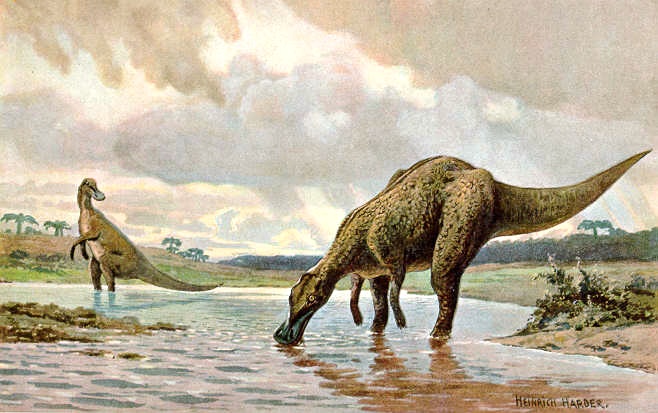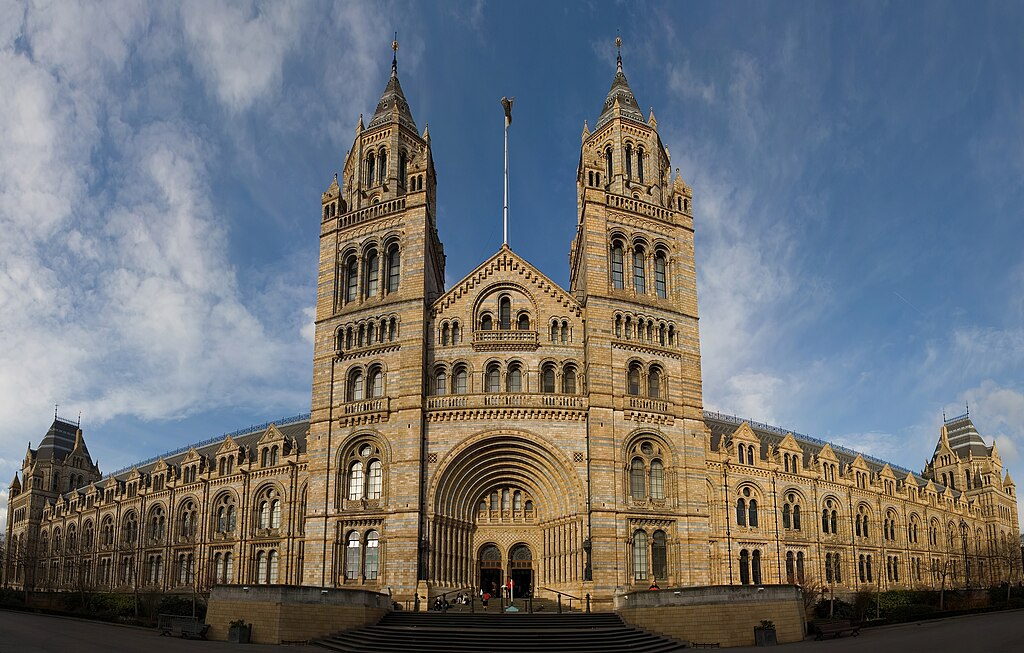From the moment dinosaur fossils were first classified in the 19th century, these prehistoric creatures have captured our imagination in powerful ways. Their enormous size, alien appearance, and mysterious extinction have made them perfect subjects for speculative fiction. Dinosaurs represent both the wonders and terrors of a lost world—a bridge between scientific reality and fantasy that creators have crossed repeatedly to produce some of our most memorable stories. This article explores the profound influence dinosaurs have had on science fiction and fantasy literature, films, television, and games throughout modern pop culture history.
The Victorian Dinosaur Renaissance

The relationship between dinosaurs and speculative fiction began almost as soon as paleontology emerged as a scientific discipline. In the Victorian era, pioneering paleontologists like Richard Owen (who coined the term “dinosaur” in 1842) and Gideon Mantell captured the public imagination with their fossil discoveries and reconstructions. Sir Arthur Conan Doyle, better known for creating Sherlock Holmes, wrote perhaps the first major dinosaur fantasy novel with The Lost World” (1912), where explorers discover a remote plateau in South America where dinosaurs still live alongside primitive humans. This seminal work established the “lost world” template that would influence countless stories for generations to come, including Michael Crichton’s similarly-titled “Jurassic Park” sequel. The Victorian era’s blend of scientific discovery and romantic adventure perfectly positioned dinosaurs as creatures straddling the line between scientific fact and fantastic speculation.
Dinosaurs as Monsters and Threats

One of the most persistent uses of dinosaurs in speculative fiction is as monsters or existential threats to humanity. Films like The Beast from 20,000 Fathoms (1953) and Godzilla (1954) drew direct inspiration from dinosaurs to create their titular monsters, with the latter explicitly described as a prehistoric creature awakened by nuclear testing. Ray Bradbury’s famous short story “A Sound of Thunder” (1952) used a Tyrannosaurus rex as the central element in one of science fiction’s most famous time travel tales, exploring how small changes in the past—like the death of a single dinosaur—could radically alter the future. These stories tap into our primal fears about nature’s power while also reflecting Cold War anxieties about technological overreach. The terrifying aspects of dinosaurs—their size, teeth, and predatory nature—make them perfect stand-ins for the unpredictable dangers of both untamed nature and human technological hubris.
Jurassic Park and the Modern Dinosaur Revival

No discussion of dinosaurs in fiction would be complete without acknowledging the revolutionary impact of Michael Crichton’s Jurassic Park (1990) and Steven Spielberg’s 1993 film adaptation. This franchise single-handedly revitalized dinosaurs in popular culture, combining cutting-edge science (for its time) with thrilling adventure storytelling. The premise—resurrecting dinosaurs through preserved DNA—brilliantly bridged the gap between scientific plausibility and science fiction wonder. Perhaps most significantly, “Jurassic Park” depicted dinosaurs not merely as monsters but as complex living creatures worthy of scientific study and even empathy. The franchise’s famous line, “Life finds a way,” encapsulated a new approach to dinosaur fiction that respected these creatures as real animals rather than simple monsters. This more nuanced portrayal influenced countless subsequent works, from documentaries like Walking with Dinosaurs to video games and children’s media that presented more scientifically informed depictions of prehistoric life.
Dinosaurs in Alternative History and Secondary Worlds

Many writers have explored fascinating “what if” scenarios involving dinosaurs, creating alternative histories where these creatures never went extinct or evolved alongside humans. Harry Harrison’s “West of Eden” trilogy (1984-1988) posits an Earth where the K-T extinction event never occurred, allowing intelligent dinosaurs to evolve as the planet’s dominant species, eventually coming into conflict with emerging human societies. Anne McCaffrey’s “Dinosaur Planet” series features dinosaur-like creatures on distant worlds, incorporating them into science fiction space exploration narratives. More recently, Victor Milán’s “The Dinosaur Lords” series transplanted dinosaurs into a medieval fantasy setting, where knights ride dinosaurs instead of horses. These works demonstrate how adaptable dinosaurs are as fictional elements, able to be incorporated into virtually any speculative setting. The inherent “alienness” of dinosaurs makes them perfect for highlighting the strangeness of alternative histories or completely fictional worlds.
Dinosaurs as Ancestors and Evolutionary Metaphors

Science fiction writers have frequently used dinosaurs to explore evolutionary themes and humanity’s place in Earth’s biological history. Robert J. Sawyer’s “Quintaglio Ascension” trilogy features intelligent, tool-using dinosaurs who escaped extinction by leaving Earth on an asteroid, developing their civilization on another world. This series uses dinosaur characters to explore questions of religion, science, and cultural development that mirror human history. James Gurney’s illustrated Dinotopia books present a utopian society where humans and intelligent dinosaurs live in harmony, often using this setting to critique aspects of human society and offer alternative social models. The fact that birds are modern dinosaurs has also inspired stories like Ted Chiang’s “The Evolution of Human Science,” which speculates about super-intelligent birds inheriting Earth after humanity. These narratives use dinosaurs and their extinction to reflect on human evolution, our potential extinction, and what might come after us.
Dinosaurs in Children’s Fantasy and Science Fiction

Dinosaurs have proven particularly appealing in children’s literature and media, where their otherworldly qualities can introduce young audiences to both scientific concepts and fantasy storytelling. Beyond classics like The Land Before Time films, works such as Mary Pope Osborne’s “Magic Tree House” books frequently use dinosaurs as entry points to historical and scientific education. Jane Yolen’s “How Do Dinosaurs…” picture book series uses dinosaurs as surrogates for child behavior, while her novel “The Devil’s Arithmetic” incorporates dinosaurs into a story about the Holocaust, making difficult subject matter more approachable. These works recognize dinosaurs’ unique ability to fascinate children while introducing complex concepts. The combination of dinosaurs’ scientific reality and their fantastical qualities makes them perfect transitional subjects for young minds moving between concrete understanding and abstract thinking.
Dinosaurs and Time Travel Narratives

Time travel and dinosaurs form a natural partnership in speculative fiction, with dinosaurs representing the ultimate “alien” destination that is still part of Earth’s history. Beyond Bradbury’s “A Sound of Thunder,” works like Clifford Simak’s “Mastodonia” use dinosaur-era time travel as a central plot element. The British television series “Primeval” combined time travel with dinosaurs through the concept of temporal anomalies that allow prehistoric creatures to enter the present day. James Patrick Kelly’s Hugo Award-winning novella “Think Like a Dinosaur” uses dinosaur-like aliens to explore complex questions about identity and consciousness in teleportation. These stories use dinosaurs not just as exciting window dressing but as fundamental elements that drive philosophical questions about time, causality, and humanity’s place in the vast expanse of Earth’s history. The temporal distance between humans and dinosaurs creates fertile ground for exploring how profoundly different Earth can be across geological timescales.
Genetically Modified Dinosaurs in Modern Fiction

Following “Jurassic Park’s” success, many writers have explored the concept of genetically engineered or modified dinosaurs as a science fiction premise. Warren Fahy’s thriller “Fragment” features creatures that evolved along a separate evolutionary path from dinosaurs but fill similar ecological niches. John Scalzi’s “Agent to the Stars” briefly features genetically engineered miniature dinosaurs as designer pets. Television series like “Terra Nova” combined time travel with genetic modification themes. These stories reflect real-world advances in genetic engineering and cloning, using dinosaurs to explore ethical questions about bringing extinct species back to life. Such narratives often serve as cautionary tales about human technological hubris while also exploring the philosophical implications of de-extinction technologies. The blending of cutting-edge genetic science with prehistoric creatures creates a particularly effective setting for examining the boundaries between what we can do scientifically and what we should do ethically.
Dinosaurs in Comic Books and Graphic Novels

Comic books and graphic novels have embraced dinosaurs with particular enthusiasm, often in ways that push the boundaries of conventional science fiction. Marvel Comics’ “Savage Land” setting features a hidden prehistoric realm within Antarctica where dinosaurs still thrive, regularly interacting with characters like Ka-Zar and the X-Men. DC Comics created the character of Dinosaur Island, which has appeared in various titles, including the “The War That Time Forgot” series. Independent comics like “Age of Reptiles” by Ricardo Delgado tell stories entirely from dinosaurs’ perspectives, without human characters or dialogue. The visual medium of comics allows creators to depict dinosaurs with a dramatic flair that would be difficult or expensive in other media. The combination of visual spectacle and fantastical storytelling has made comics an ideal medium for dinosaur-themed narratives that might be too conceptually outlandish for other formats.
Dinosaurs in Video Games and Interactive Fiction

Video games have created some of the most immersive dinosaur-inspired fictional worlds, allowing players to interact directly with these prehistoric creatures. Beyond the numerous Jurassic Park game adaptations, series like Turok blend Native American mythology with science fiction themes and dinosaur encounters. “ARK: Survival Evolved” places players in an open world where they must survive among dinosaurs and other prehistoric creatures, potentially taming them as allies. The “Monster Hunter” series incorporates dinosaur-inspired designs into many of its fictional creatures. These interactive experiences offer a unique dimension to dinosaur storytelling, allowing audiences to experience the terror and wonder of encountering these creatures firsthand. The agency that games provide creates emotional responses that differ significantly from passive media, making the dinosaur encounter a personally meaningful experience rather than merely an observed one.
Paleontological Accuracy Versus Creative License

An ongoing tension in dinosaur fiction involves balancing scientific accuracy with storytelling needs. Some works, like the documentary series Prehistoric Planet, “strive for maximum fidelity to current paleontological understanding. Others, like Jurassic World, “knowingly sacrifice accuracy for dramatic effect, with the in-universe explanation that their dinosaurs contain genetic modifications. Author Robert J. Sawyer has discussed the challenge of updating his dinosaur fiction as new scientific discoveries emerge, while others like C.J. Cherryh deliberately create “alternative dinosaurs” that differ from Earth’s fossil record. This tension reflects broader questions about science fiction’s responsibility to scientific fact. The debate continues to evolve as our understanding of dinosaurs changes, with some creators embracing new evidence (like feathered dinosaurs) while others stick with more traditional, if outdated, depictions for audience familiarity.
Dinosaurs as Bridges Between Fiction and Science Education

Many authors have deliberately used dinosaur fiction as vehicles for science education, creating works that entertain while informing readers about paleontology. Gregory Benford’s “Ancient of Days” incorporates detailed discussions of human evolution and paleoanthropology within its narrative about a prehistoric hominid appearing in the modern world. David Brin’s “The Ancient Ones” uses dinosaur-like aliens to explore concepts of deep time and extinction. Non-fiction writers like Brian Switek and Riley Black have also crossed into fiction with dinosaur-themed stories that incorporate accurate science. These works demonstrate how the inherent appeal of dinosaurs can draw audiences to scientific concepts they might otherwise find intimidating or dry. The emotional connection many people feel toward dinosaurs creates an opportunity to introduce complex scientific ideas in accessible ways, making dinosaur fiction a valuable bridge between entertainment and education.
The Future of Dinosaurs in Speculative Fiction

As our understanding of dinosaurs continues to evolve through new fossil discoveries and analytical techniques, so too will their portrayal in fiction. Emerging technologies like virtual reality promise even more immersive dinosaur experiences, while advances in paleontological science provide writers with new facts and theories to incorporate. Climate fiction (“cli-fi”) increasingly draws parallels between the extinction of dinosaurs and potential human-caused mass extinctions. Writers from diverse cultural backgrounds are bringing fresh perspectives to dinosaur narratives, incorporating indigenous knowledge and non-Western scientific traditions. The dinosaur’s position as a creature that is simultaneously real and fantastical ensures its continued appeal to creators of speculative fiction. These prehistoric creatures will likely remain powerful symbols in our storytelling, representing both the wonder of scientific discovery and the limitless boundaries of human imagination.
The Enduring Power of Dinosaurs in Imagination and Storytelling

Dinosaurs occupy a unique position in our cultural imagination—creatures that existed yet remain mysterious enough to fuel endless speculation. Their footprints can be found across the landscape of science fiction and fantasy, from Victorian adventure tales to cutting-edge virtual reality experiences. As both scientific knowledge and storytelling techniques continue to evolve, dinosaurs provide a fascinating case study in how scientific facts and creative imagination can intertwine, each enhancing the other. These magnificent creatures from Earth’s distant past will undoubtedly continue to inspire stories that help us consider our planet’s history, our place in nature, and possible futures both wondrous and terrifying.




